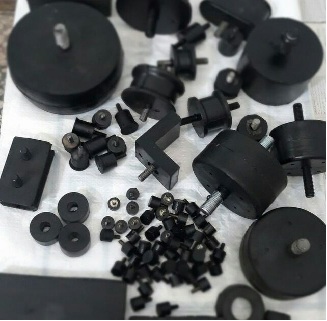The Necessity of Using Dampers and Shock Absorbers
In industrial and non-industrial equipment, friction or other factors often generate stress, shocks, and vibrations within the system. Without proper mitigation and control of these stresses or without providing solutions to reduce their intensity, the efficiency and lifespan of the system will decrease. In severe cases, serious damage can lead to system failure due to intensified vibrations.
To address these issues, dampers, shock absorbers, or dampers, which are mechanical or hydraulic devices designed to neutralize mechanical stresses and reduce the transmission of shocks to the structure and mechanism of a system or mechanical assembly, are used. They can be considered as a kind of energy dissipation system, converting kinetic energy of shocks into another form of energy, typically heat, which is then dissipated. Most dampers are a type of dashpot, a mechanical damper that resists motion and oscillation through viscous friction. The main difference between dampers, shock absorbers, or dampers is the duration and intensity of the stresses, pressures, and oscillations involved.
Rubber Shock Absorbers
Shock absorbers, used to reduce the range of impacts and minimize collision effects, come in various shapes, sizes, thicknesses, and materials such as steel, plastic, lightweight metal, and rubber, depending on the application and the pressure per unit area. However, rubber shock absorbers are more common because rubber has relatively high shear modulus. When stress and shock resulting from vibrations are applied to rubber materials, they can absorb more stress and vibration before yielding, deforming, or transmitting vibrations. Rubber shock absorbers typically consist of three parts: high-elasticity rubber, a metal plate for strength enhancement, and sometimes woven fibers and fabric to preserve the rubber structure against severe impacts and vibrations.
Applications of Rubber Shock Absorbers
Rubber shock absorbers are used in a wide range of industrial and non-industrial applications to reduce motion and vibration against impacts that create noise and can cause initial equipment damage. They offer a cost-effective way to provide rubber isolation for many different applications. Rubber shock absorbers provide an excellent method for protecting and isolating two surfaces and equipment from intense impact. They are used in applications including electronics, aerospace, healthcare, construction, transportation, defense, and more. One of the most common uses of rubber shock absorbers is to protect doors or vehicle bodies from damage and impact resulting from collisions.
Types of Rubber Used in Rubber Shock Absorbers
- Natural Rubber (NR)
- Synthetic rubber such as SBR, CR, or Neoprene, EPDM, Nitrile, Silicone, Polysulfide, Urethane, Polyurethane, and Butyl
Advantages of Rubber Shock Absorbers
- Protect surfaces from impact and vibration while providing ventilation
- Protect safety-related equipment such as headlights, taillights, and parking lights
- Control and reduce vibration in equipment
- Provide resilient resistance
- Sound absorption capability
- Shock, vibration, and harshness resistance
- Isolation of shock and vibrations
- Easy installation
- Reduced thermal loss
- Minimization of collision effects during accidents through impact absorption or mitigation
- Can be produced in desired colors
Types of Rubber Shock Absorbers
- Bolted Shock Absorber (Double End Bolt, Single End Bolt)
- Nut Shock Absorber (Single End Nut, Double End Nut)
- Circular/Elliptical/Square/Rectangular Shock Absorber
- D-Shaped Shock Absorber
- Accordion Shock Absorber
- Neoprene Shock Absorber
- Wall Shock Absorber
- Industrial Shock Absorber
- Industrial Shock Absorber
Industrial Shock Absorbers
Industrial shock absorbers are used to absorb mechanical vibrations and shocks generated by diesel, electric, gasoline engines, gearboxes, industrial pumps, as well as machinery and equipment mechanisms. They are also used in structures, bridges, towers, and more to receive vibrations and mechanical stresses. Industrial shock absorbers are widely used in various industries, including automotive, maritime, railway, aerospace, road construction, bridge construction, petrochemical, textile, and utilities.
Advantages of Industrial Shock Absorbers
- Prevent excessive vibrations in pumps and production machinery
- Prevent vibrations and shocks on pipeline systems
- Prevent errors on computational devices’ outputs
- Provide cushioning resistance
- Sound absorption capability
- Impact, vibration, and shock resistance
- Electric shock resistance
- Easy installation and replacement
Types of Industrial Shock Absorbers
- Bridge Shock Absorber
- Building Shock Absorber
- Automotive Industrial Shock Absorber
- Roller Shock Absorber
- Dock Shock Absorber
- Column Shock Absorber
- Under Press Impact Shock Absorber
- Elevator Shock Absorber
- Under Industrial Machinery Shock Absorbers
- Shock Absorbers for Pumps and Centrifuges
- Dock and Loading Platform Shock Absorbers
- Dock and Loading Platform Shock Absorbers

